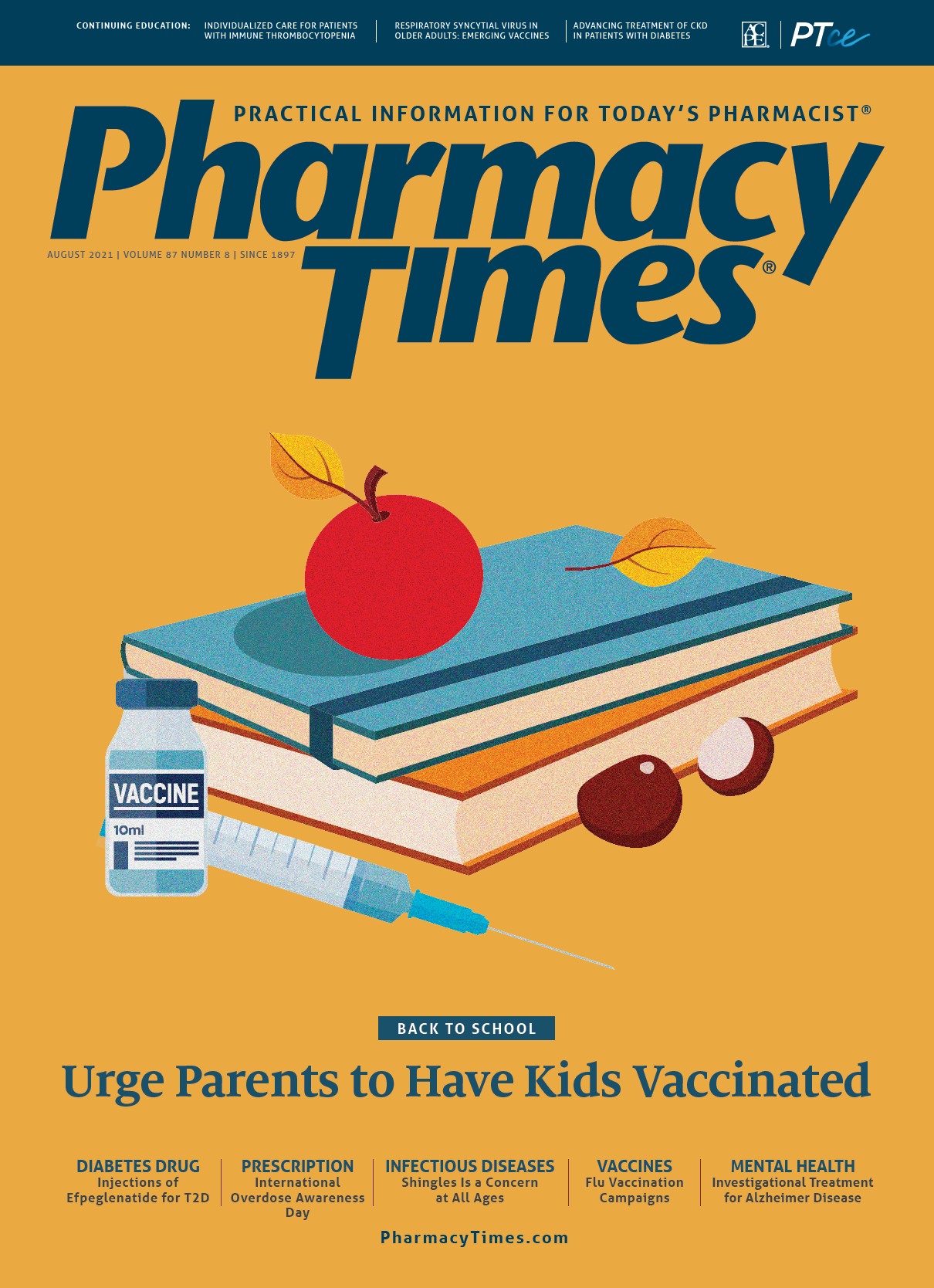Publication
Article
Pharmacy Times
August 2021 Interactive Case Studies
Author(s):
How would you answer these patients' questions?
CASE 1
Q: AG is a 65-year-old woman who has type 2 diabetes. She recently started insulin therapy because of worsening glycemic control. AG's antidiabetic regimen includes 5 units of insulin aspart before breakfast, 20 units of insulin glargine at bedtime, and 1000 mg of metformin twice daily. She tests 4 times per day, at bedtime and before meals. AG wonders why her blood glucose is so high every morning. Upon review of her logs, the pharmacists notice that her bedtime readings average 89 mg/dL, with subsequent fasting readings averaging more than 200 mg/dL the past week. AG does not snack late at night and says that she takes her medications as directed every day. What is the explanation?
A: AG's morning hyperglycemia may be the result of either the dawn phenomenon or Somogyi effect. To distinguish the cause, instruct her to test her glucose levels around 3 AM. If AG is experiencing nocturnal hypoglycemia, it is most likely the Somogyi effect; her body compensates for low sugar by secreting glucagon, causing rebound hyperglycemia in the morning. This can be the result of not eating enough carbohydrates at night or taking too much insulin. The pharmacist should assess AG's insulin technique and verify her doses to ensure that she is using the insulin correctly. She may need a dose reduction of her insulin to improve her glucose readings. The pharmacist can recommend decreasing AG's glargine to 16 units at bedtime.
CASE 2
Q: EG is a 51-year-old woman who has been experiencing hot flashes for the past 6 months. She mentions that she has not spoken to her physician because she heard these are normal menopause symptoms. However, during the past month, the symptoms have been disrupting EG's daily life and sleep. She smokes half a pack of cigarettes per day and has not been able to go to the gym to exercise because of COVID-19 facility restrictions. EG's past medical history includes osteopenia, but she is otherwise healthy. EG recently spoke to a neighbor who said that she also had hot flashes and that her physician prescribed a hormone tablet, which helped. EG wonders whether this treatment could work for her as well. What should the pharmacist tell her?
A: Vasomotor symptoms, or hot flashes, are a common symptom of menopause. Because EG's symptoms are disrupting her life, hormonal replacement therapy (HRT), such as estrogen alone or in combination with a progestin, could be an option if the benefits of symptom reduction outweigh the risks. She should be screened for a history of cardiovascular and thrombotic disease, along with breast cancer. If appropriate, the lowest effective dose of HRT should be used for symptom relief.1 Treatment should be for the shortest duration possible. Lifestyle changes, such as exercising regularly, maintaining a healthy body weight, and refraining from smoking have also been shown to provide some relief from hot flashes.2 If HRT is not appropriate, EG should talk to her physician about trying serotonin-norepinephrine reuptake inhibitors or selective serotonin reuptake inhibitors for symptom management.
Leanne Varga and Lauren Bronson are PharmD candidates at the University of Connecticut School of Pharmacy in Storrs.
Stefanie C. Nigro, PharmD, BCACP, CDCES, is an associate clinical professor at the University of Connecticut School of Pharmacy.
REFERENCES
1. ACOG Practice Bulletin No. 141: management of menopausal symptoms. Obstet Gynecol. 2014;123(1):202-216. doi:10.1097/01.aog.0000441353.20693.78
2. Jull J, Stacey D, Beach S, et al. Lifestyle interventions targeting body weight changes during the menopause transition: a systematic review. J Obes. 2014;2014:824310. doi:10.1155/2014/824310

Newsletter
Stay informed on drug updates, treatment guidelines, and pharmacy practice trends—subscribe to Pharmacy Times for weekly clinical insights.





